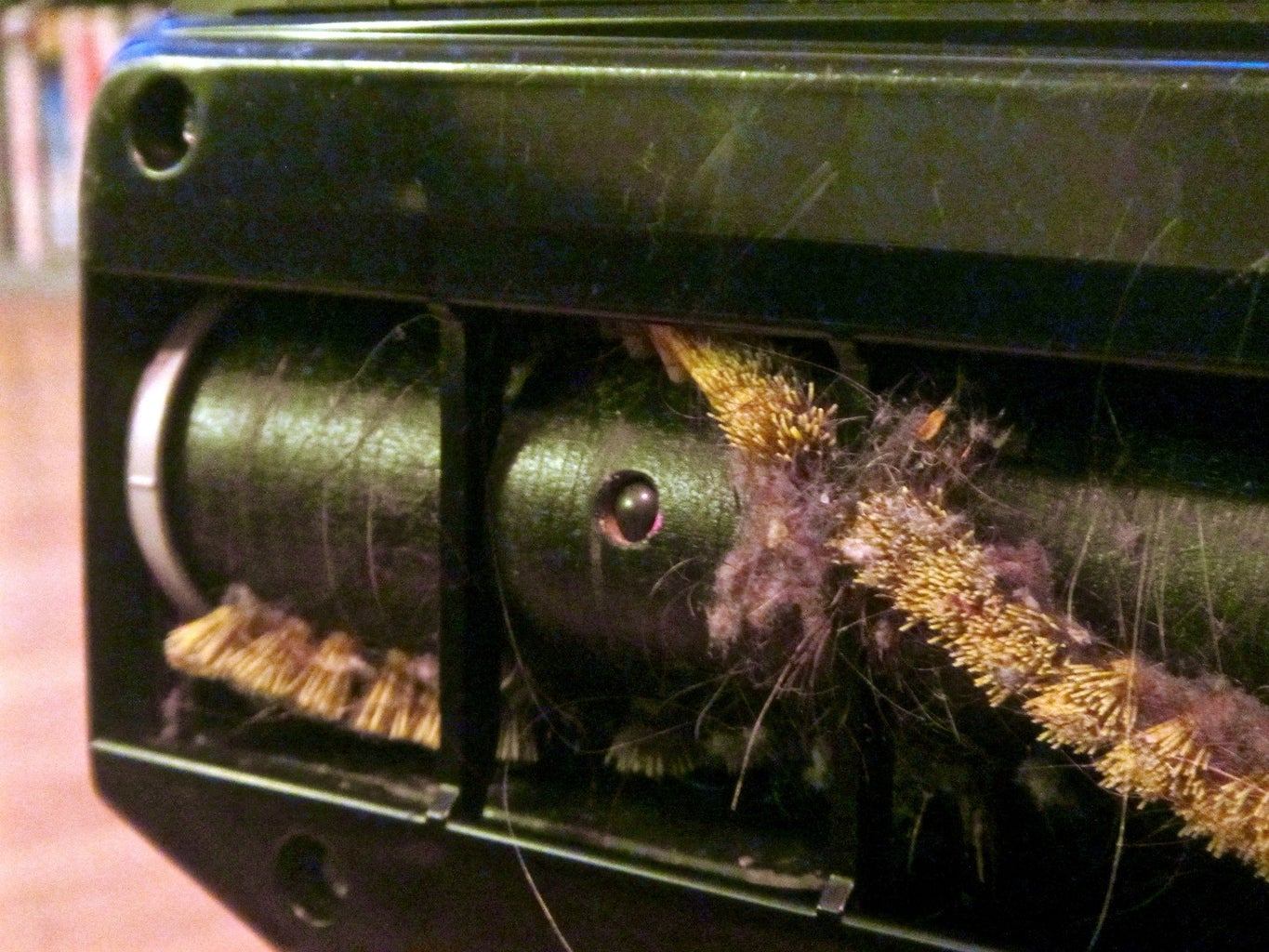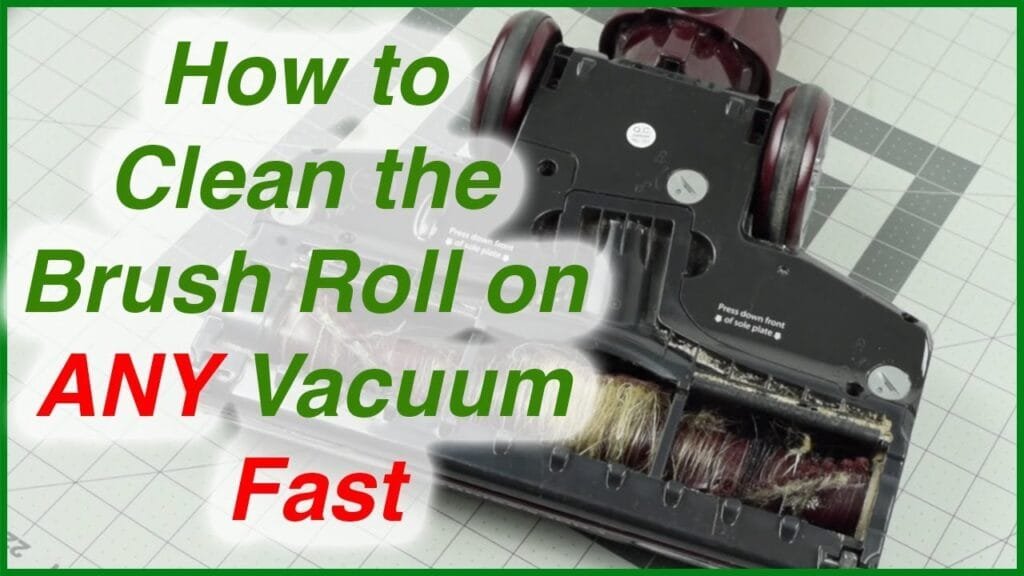Cleaning your vacuum brush roll is essential for maintaining your vacuum’s performance. A dirty brush roll can reduce suction power and spread dirt instead of picking it up.
Keeping your vacuum brush roll clean ensures it works efficiently and lasts longer. Over time, hair, dust, and debris can get tangled in the brush roll, making it less effective. This can lead to reduced cleaning efficiency and even damage to your vacuum.
Regular cleaning prevents these issues and keeps your home cleaner. In this guide, we will show you simple steps to clean your vacuum brush roll. You don’t need special tools or skills. Just follow our tips, and your vacuum will be in top shape in no time. Let’s get started.
Importance Of Cleaning Vacuum Brush Roll
A clean vacuum brush roll is crucial for maintaining your vacuum’s efficiency. Dust, hair, and debris can easily collect on the brush roll. This build-up can hamper the vacuum’s ability to pick up dirt effectively.
Enhancing Vacuum Performance
Cleaning the brush roll enhances your vacuum’s performance. When the brush roll is clean, it can spin freely. This helps in picking up dirt, dust, and hair more efficiently.
A clean brush roll ensures that your vacuum works at its best. It can reach into carpets and rugs, pulling out embedded dirt. This leads to a cleaner home.
Prolonging Vacuum Lifespan
Regularly cleaning the brush roll can prolong your vacuum’s lifespan. Debris can cause the brush roll to strain, leading to wear and tear. This can shorten the vacuum’s life.
By keeping the brush roll clean, you reduce the stress on the vacuum motor. This helps in maintaining the vacuum’s durability and functionality. A well-maintained brush roll leads to fewer repairs and replacements.
Signs Your Vacuum Brush Roll Needs Cleaning
A clean vacuum brush roll is crucial for efficient cleaning. Over time, the brush roll collects hair, dust, and debris. These can affect your vacuum’s performance. Knowing the signs of a dirty brush roll helps maintain your vacuum’s efficiency.
Reduced Suction Power
Notice a drop in suction power? This could be a sign. A clogged brush roll struggles to pick up dirt. Debris can block the airflow. The vacuum then loses its suction power. Check the brush roll if your vacuum isn’t cleaning well.
Unusual Noises
Does your vacuum make strange noises? This is another sign. Debris around the brush roll can create unusual sounds. You might hear rattling or grinding. These noises indicate something is caught in the brush roll. Cleaning it can restore normal operation.
Tools And Materials Needed
Gather a screwdriver, scissors, and a small brush. These tools help in cleaning the vacuum brush roll easily. A clean cloth and mild soap are also recommended for the best results.
Cleaning the brush roll of your vacuum is essential for maintaining its efficiency and prolonging its lifespan. To do this effectively, you will need specific tools and materials. Being prepared with the right items can make this task easier and more efficient.Essential Cleaning Tools
First, gather the basic tools required for the job. A screwdriver is crucial for removing the brush roll cover. Most covers are secured with screws, and having the right screwdriver will save you time.A pair of scissors or a seam ripper is also vital. These will help you cut through tangled hair and strings without damaging the bristles.Additionally, keep a small brush or an old toothbrush handy. This will help you scrub away stuck debris and dust.Recommended Cleaning Solutions
For a deep clean, you might need more than just tools. Mild dish soap mixed with warm water is an excellent solution for cleaning the brush roll. It’s gentle yet effective.In some cases, a mixture of vinegar and water can be used for a more natural cleaning option. This can help in removing stubborn dirt and even disinfect the brush.You might also find a specialized vacuum cleaner brush roll cleaner in stores. These are designed specifically for this purpose and can be very effective.Do you have any go-to tools or solutions for cleaning your vacuum brush roll? Share your tips and let’s keep our vacuums running smoothly!Preparing Your Vacuum For Cleaning
Before cleaning your vacuum brush roll, ensure the vacuum is ready. Proper preparation ensures a smooth process. It also keeps you safe. Follow these steps to get started.
Unplugging The Vacuum
First, unplug the vacuum from the power source. This step is crucial. It prevents any accidental start while working. Safety should always come first. Double-check to ensure the vacuum is completely off.
Removing The Brush Roll
Next, locate the brush roll cover. It is usually at the bottom of the vacuum. Use a screwdriver to remove the screws holding the cover. Carefully lift the cover to access the brush roll.
Gently pull out the brush roll. Note its position for reassembly. Some models may have clips instead of screws. Follow your vacuum’s manual if you are unsure.
Step-by-step Cleaning Guide
Cleaning a vacuum brush roll involves removing the brush, clearing debris, and washing it. Regular cleaning ensures better vacuum performance. Keep your vacuum in top shape with this easy-to-follow guide.
If you’ve ever noticed your vacuum cleaner losing its efficiency, the culprit might be a dirty brush roll. Cleaning the brush roll can greatly enhance your vacuum’s performance. Follow this step-by-step cleaning guide to ensure your vacuum is in top shape.Removing Debris And Hair
Start by unplugging your vacuum cleaner to ensure safety.Gently lay the vacuum on its side to access the brush roll.Remove the cover plate using a screwdriver if necessary. This will expose the brush roll.Carefully lift the brush roll out of its slot. You might encounter some resistance if there’s a lot of tangled hair and debris.Use scissors to cut away the hair and strings wrapped around the brush roll. Make sure to cut along the groove to avoid damaging the bristles.Once the hair and debris are loosened, pull them out with your fingers or tweezers. Dispose of the collected debris in a nearby trash can.Washing The Brush Roll
After removing the debris, it’s time to wash the brush roll. Prepare a basin of warm soapy water.Immerse the brush roll in the soapy water. Use a small brush or an old toothbrush to scrub the bristles gently.Pay special attention to the ends of the brush roll where dirt tends to accumulate.Rinse the brush roll thoroughly under running water to remove soap residue.Shake off excess water and let the brush roll air dry completely before reassembling.Reinsert the brush roll into its slot and secure the cover plate.Plug in your vacuum and do a quick test to ensure everything is working smoothly.Cleaning your vacuum brush roll might seem like a chore, but it’s worth the effort. Have you ever noticed the difference a clean brush roll makes? Share your experiences in the comments below!
Credit: www.instructables.com
Drying And Reassembling The Brush Roll
Ensure the brush roll is completely dry before reassembling. Moisture can damage the vacuum. Reinstall the brush carefully, aligning it properly.
After cleaning the vacuum brush roll, drying and reassembling are crucial steps. Proper drying prevents mold and mildew. Reassembling ensures the vacuum works well. Let’s explore the drying techniques and reattaching methods.Air Drying Techniques
Allow the brush roll to air dry completely. Place it in a well-ventilated area. Avoid direct sunlight, which can damage the bristles. Use a clean towel to pat dry before air drying. This helps speed up the drying process.Reattaching The Brush Roll
Reattaching the brush roll correctly is important. Align the brush roll with its slot. Ensure the bristles face the right direction. Secure the ends of the brush roll tightly. Double-check to make sure it spins freely. This guarantees optimal performance of your vacuum. “`Maintenance Tips
Keeping your vacuum brush roll in top shape ensures your vacuum works efficiently. Regular maintenance prevents clogs and extends the life of your vacuum. Here are some essential tips to keep your vacuum brush roll clean and functioning well.
Regular Cleaning Schedule
Establish a routine to clean your vacuum brush roll. Aim for once a month. This prevents hair and debris from building up. Use scissors to cut away tangled hair. Pull out any remaining debris by hand. Make sure the brush roll spins freely after cleaning.
Checking For Wear And Tear
Inspect your vacuum brush roll for signs of wear. Look for frayed bristles or cracks. Replace the brush roll if you notice any damage. Regular checks keep your vacuum running smoothly.
Examine the belt that drives the brush roll. Replace it if it’s loose or broken. A worn belt reduces the vacuum’s effectiveness. Check the belt every few months for the best results.

Credit: www.youtube.com
Troubleshooting Common Issues
Cleaning the vacuum brush roll removes hair and debris, ensuring efficient performance. Regular maintenance prevents clogs and keeps your vacuum running smoothly. Simple steps can extend the life of your appliance.
### Troubleshooting Common IssuesCleaning your vacuum brush roll can sometimes present unexpected challenges. You might find that even after cleaning, the vacuum isn’t working as efficiently as it should. Let’s dive into some common issues and how to troubleshoot them.###Brush Roll Not Rotating
One common problem is when the brush roll stops rotating. This can drastically reduce your vacuum’s effectiveness.First, check if there is any debris tangled around the brush roll. Strings, hair, and other materials can easily get caught and prevent rotation. Use a pair of scissors to carefully cut away any entangled debris.If your brush roll is still not rotating, the issue might be with the belt. Inspect the belt for any signs of wear and tear. A loose or broken belt will need to be replaced.Sometimes, the problem lies with the motor. If you’ve checked both the brush roll and the belt and they seem fine, the motor might be the culprit. This might require professional repair.###Persistent Dirt And Debris
Another issue you might encounter is persistent dirt and debris, even after cleaning the brush roll. This can be very frustrating.Ensure you are cleaning the entire brush roll thoroughly. Sometimes, debris can get stuck in the bristles or around the edges. Use a brush or a cloth to wipe these areas clean.If you notice that the bristles are worn out or damaged, it might be time to replace the brush roll. Worn-out bristles can’t pick up dirt effectively.Check the vacuum’s suction power. Sometimes, the issue isn’t with the brush roll but with the vacuum’s overall suction. Make sure the filters are clean and there are no blockages in the hose.Have you ever faced these issues? How did you resolve them? Troubleshooting these common problems can save you time and money, and ensure your vacuum works at its best. Don’t let these small issues deter you from maintaining a clean home.
Credit: www.instructables.com
Frequently Asked Questions
How To Clean A Vacuum Cleaner Roller Brush?
Unplug the vacuum cleaner. Remove the roller brush. Use scissors to cut away hair and debris. Wipe with a damp cloth. Reassemble and test.
How To Clean A Vacuum Dusting Brush?
Remove the brush from the vacuum. Use warm soapy water to clean it. Rinse thoroughly and let it dry completely before reattaching.
How Can I Clean A Roller Brush?
Remove the roller brush from the device. Use scissors to cut away hair and debris. Wash with soapy water, then rinse and dry thoroughly. Reassemble the brush.
How To Get Hair Off A Vacuum Roller?
To remove hair from a vacuum roller, first unplug the vacuum. Use scissors or a seam ripper to cut and pull out the hair.
Conclusion
Regular cleaning keeps your vacuum brush roll effective. Remove debris frequently for smooth operation. Check for tangled hair often. Clean with a damp cloth. Dry thoroughly before reassembling. These steps ensure your vacuum performs well. A clean brush roll means better suction.
Your floors will thank you. Keep your vacuum in top shape. Happy cleaning!

